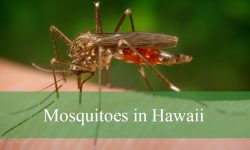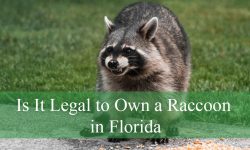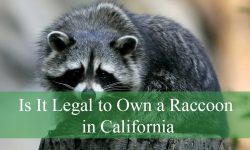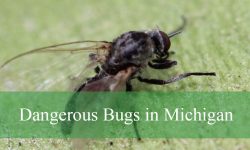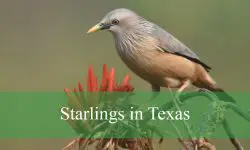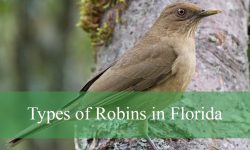California is a paradise for bird lovers, especially those fascinated by the vibrant flashes of orioles. Orioles in California bring life to gardens, parks, and woodlands with their bright orange and yellow plumage, turning everyday landscapes into scenes of color and movement.
Watching a Hooded Oriole sip nectar or a Bullock’s Oriole craft its hanging nest is a magical experience for bird enthusiasts. Rare visitors like Baltimore and Orchard Orioles add an element of surprise, making every sighting an exciting moment to cherish.
Birders of all levels can enjoy Orioles in California across diverse habitats, from urban backyards to riparian forests. Their cheerful songs and dazzling colors make them one of the state’s most admired and memorable birds, inspiring awe and admiration at every encounter.
Different Types of Orioles Found in California
Hooded Oriole (Icterus cucullatus)
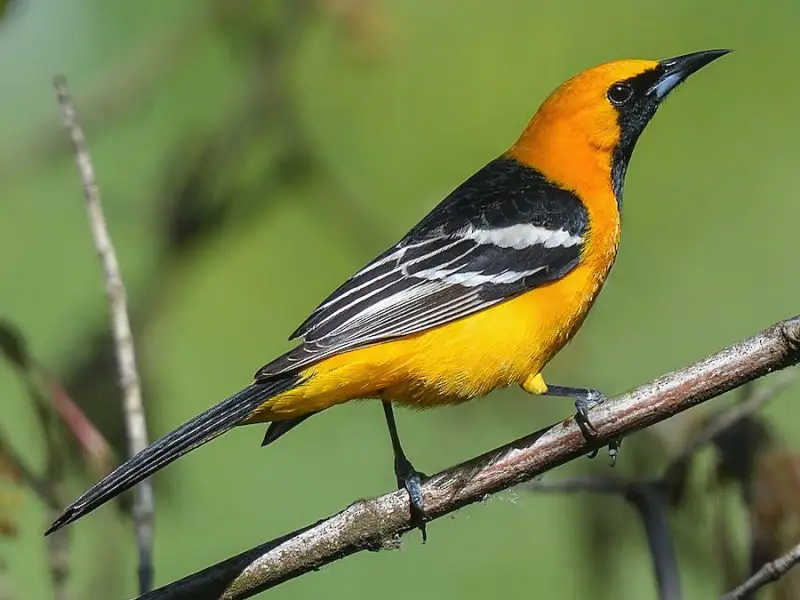
The Hooded Oriole is one of the most common orioles in California, especially in the southern regions. Males stand out with their striking orange body, black throat, and slightly curved bill, while females and juveniles are paler yellow-green, often blending more easily with foliage. Their slender build and long tail give them a graceful appearance that makes them easy to distinguish from other birds.
This oriole has adapted well to suburban environments, particularly in areas with ornamental palms. They weave their nests under palm fronds, creating pouch-like structures that hang delicately and provide excellent protection. These nests are often spotted in neighborhoods, parks, and backyards, making them one of the more familiar orioles for residents of Southern California.
Their diet includes insects, nectar, and fruit. Many bird enthusiasts attract them with nectar feeders, orange halves, or jelly, similar to how people attract hummingbirds. Hooded Orioles have a quick, chattering call and are often seen flitting between palm trees or visiting feeders with fast, darting movements.
Migration plays a big role in their yearly cycle. Hooded Orioles arrive in California as early as March, breed throughout spring and summer, and depart in late summer or early fall for Mexico and Central America. Their seasonal presence makes them a welcome sign of warmer months in California.
In terms of distribution, they are most abundant in Southern California but can also be found in the Central Valley and coastal areas. Observers frequently report them in urban and suburban areas, where palm trees and flowering plants provide both food and nesting sites.
Bullock’s Oriole (Icterus bullockii)

Bullock’s Oriole is widespread across much of California, particularly in northern and central regions. Males display bright orange plumage with a contrasting black crown, black eye-line, and white wing bars, while females are more yellow with gray-brown wings. This vivid coloration makes the species easy to identify, especially when perched in tall trees.
These orioles are most commonly found in riparian areas, woodlands, orchards, and city parks. They prefer tall deciduous trees such as cottonwoods and sycamores, where they construct remarkable hanging nests. The nests are carefully woven from fibers, grasses, and sometimes human-made materials like yarn or string, showing their resourcefulness in diverse habitats.
Their song is a cheerful warble, often described as sweet and flute-like. Males sing frequently during the breeding season to establish territories and attract mates. Bullock’s Orioles also produce a variety of calls, including chatter notes that help them stay in contact with family groups.
These orioles are migratory, arriving in California during spring and leaving for Mexico in late summer or early fall. Their peak presence in the state is from April to August, when they can be seen foraging actively for insects, fruit, and nectar. Their seasonal return is celebrated by birdwatchers eager to spot their bright flashes of color.
Geographically, Bullock’s Orioles are more common inland than along the coast. They can be seen throughout the Central Valley, Sierra Nevada foothills, and northern California landscapes, making them one of the most reliable oriole species in the state.
Baltimore Oriole (Icterus galbula)
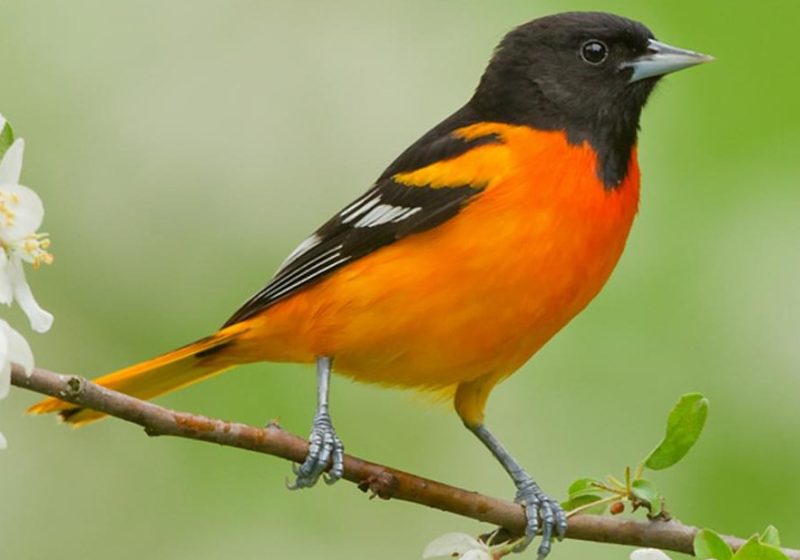
The Baltimore Oriole, famous as the state bird of Maryland, is not a regular species in California but occasionally appears as a rare migrant or winter visitor. Males are known for their brilliant orange body, contrasting black head, and striking wing pattern, while females are duller with yellow-orange and brownish hues. Their beauty and rarity make them especially exciting to spot on the West Coast.
Unlike Hooded and Bullock’s Orioles, Baltimore Orioles are not common breeders in California. They primarily inhabit the eastern half of North America, but wandering individuals sometimes stray westward during migration. When they do appear in California, it is usually in coastal regions, parks, or groves where fruiting trees are available.
These orioles feed on insects, fruits, and nectar. They are known to visit feeders offering oranges or grape jelly, and birders lucky enough to host one often enjoy extended views. Their whistled songs are among the most melodious of all orioles, making them even more cherished when they appear unexpectedly.
Sightings are most likely during fall and winter when migrants overshoot their usual range. Reports of Baltimore Orioles in California generate a buzz among birding communities, often leading enthusiasts to travel in hopes of glimpsing this colorful rarity.
Although rare, the Baltimore Oriole’s occasional presence in California highlights the unpredictable nature of bird migration. These unexpected appearances serve as a reminder of how diverse birdlife can be, even far from a species’ typical home.
Orchard Oriole (Icterus spurius)
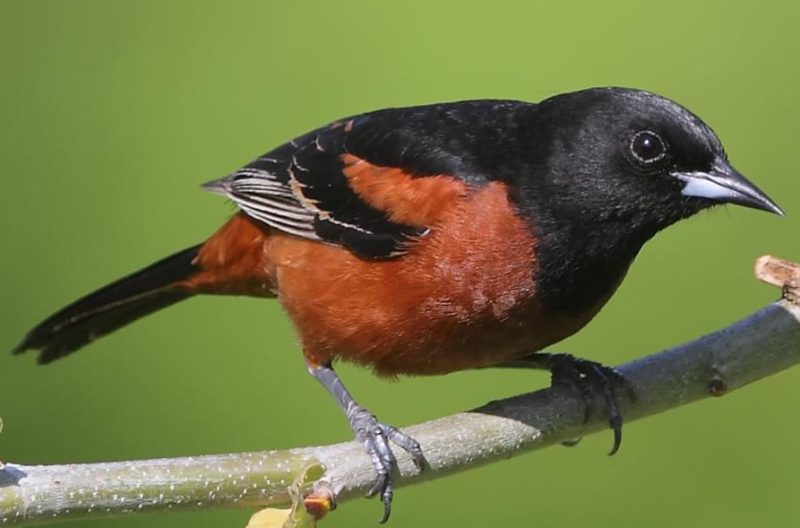
The Orchard Oriole is the smallest North American oriole and an unusual sight in California. Adult males are easily recognized by their chestnut-colored body combined with a black head and wings, while females and immature birds are yellow-green, resembling smaller versions of other orioles. Their petite size and distinct coloration help set them apart from more common species.
This species normally breeds in the eastern United States, favoring orchards, riversides, and open woodlands. They migrate to Central America for the winter, but on rare occasions, individual Orchard Orioles wander west, sometimes reaching California’s coastlines or southern regions. Their presence is unpredictable but always noteworthy.
Orchard Orioles feed mainly on insects, nectar, and ripe fruits. They are agile foragers, often seen gleaning insects from leaves or sipping from flowers. Although they do not frequently visit California feeders, in their normal range they may accept offerings of fruit and sugar water.
Like other orioles, they are skilled nest builders, weaving basket-like nests that hang from branches. In California, where they are considered vagrants, their nesting activity is not recorded, as they typically do not stay long enough to breed.
Most California sightings occur during spring or fall migration, when disoriented or adventurous individuals stray far from their usual route. For birdwatchers, encountering an Orchard Oriole in California is a rare and rewarding event, adding an element of surprise to seasonal birding.
Best Time & Place to See Orioles in California
Orioles in California are most easily observed during their migration and breeding seasons. Hooded Orioles typically arrive in Southern California in March and stay through late summer, with peak visibility from April to July. They are most often found in urban areas with palm trees, residential gardens, and city parks.
Bullock’s Orioles appear mainly in northern and central California between April and August. Look for them in riparian habitats, orchards, and woodland areas with tall deciduous trees like cottonwoods and sycamores. They are particularly active in the morning, singing and foraging for insects and nectar.
Rare visitors like the Baltimore Oriole and Orchard Oriole appear unpredictably, usually during fall migration (September to November) or winter months. Coastal parks, fruiting groves, and suburban areas with feeders are the best locations to spot these vagrants. Birders should remain vigilant, as these orioles can appear for just a few days before continuing their journey.
For urban birdwatchers, backyard feeders offering oranges, grape jelly, or nectar attract Hooded and Bullock’s Orioles consistently. In contrast, natural riparian corridors and woodlands are ideal for observing the rarer species. Early morning or late afternoon provides the best lighting for spotting their bright plumage.
Ultimately, the combination of season, habitat, and food sources determines oriole sightings in California. Keeping a field guide or birding app handy helps confirm species, especially when rare visitors like Baltimore or Orchard Orioles appear.
Frequently Asked Questions (FAQs)
What are the main differences between Hooded and Bullock’s Orioles?
Hooded Orioles are mostly found in Southern California and are bright orange with black throats, often nesting in palms. Bullock’s Orioles are more widespread in central and northern regions, have a black crown, and prefer cottonwoods and riparian trees for nesting.
Can Baltimore Orioles be seen in California regularly?
No, Baltimore Orioles are rare visitors in California. They are primarily eastern birds, and sightings in the state are usually limited to fall or winter as wayward migrants.
What attracts orioles to backyard feeders?
Orioles are attracted to nectar, orange halves, and grape jelly. Providing these foods in safe, elevated feeders can increase the chances of observing them up close.
When is the best time of day to see orioles?
Early morning and late afternoon are ideal times. During these periods, orioles are actively foraging, singing, and moving between trees, making them easier to spot.
Are orioles migratory in California?
Yes. Hooded and Bullock’s Orioles migrate south to Mexico or Central America in late summer and return in spring. Rare visitors like Baltimore and Orchard Orioles may appear in California during migration periods but do not breed there.

